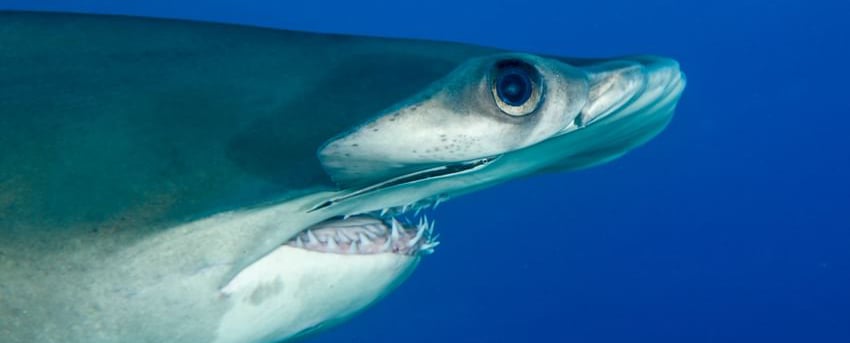Sharks, in general, are just amazing, but the hammerhead is even more so. We have found some facts about hammerhead sharks that you might not have known.
Why are hammerheads such a weird shape?
Nature always has a reason for everything, whether we know it or not. But you have to admit, it’s a pretty special shape these sharks are sporting! So we looked into why they have evolved to be what they are today and what advantages this gives them.
Better Vision

Hammerheads are pretty bonkers looking, but their wide-set eyes give them a better visual range than most other sharks. It also gives them a better perception of depth.
Better electronic sensing

Like all sharks, hammerheads can sense electromagnetic fields. However, the electro-sensory pores, the ‘ampullae of Lorenzini‘, are more highly concentrated on the lower surface on hammers than they are on regular headed sharks. This means their special hammer-shaped heads can work as metal detectors, allowing then to find stingrays buried under the sand.
Better smell
Among the many interesting facts about hammerhead sharks out there, the fact they have nostrils is one of the least expected. The hammer-shaped head means these nostrils, technically called ‘nares‘, are positioned further apart. This allows them to tell which nare receives an enticing smell first, then points them in the right direction.
Better prey handling
There are very few things a hammerhead shark likes more than a fresh, tasty sting ray. But these are not the easiest things to handle, even with hands. So how do hammerhead sharks do it? Easy, they use their bonkers wide head to pin fleeing rays to the sandy bottom.
Better swimming performance

Have you ever noticed how sharp and fast hammerheads make their turns? This is thanks to the special shape of that mad head, called a ‘cephalofoil‘. The cephalofoil helps the hammerhead shark to plane its way through a turn with more stability than other sharks.
Better Brains

As you can tell from all the information above, hammerheads are receiving a lot of information via their senses. To process all the information that their hammer-shaped head provides them, they need a relatively big brain, which their uniquely shaped head can hold. Who would’ve thought?
Surprising facts about hammerhead sharks that aren’t about the hammer
Sometimes it’s not all about the hammer. So what else do we know?
They’ve been around a long time
Whilst the first sharks appeared around 450 million years ago, studies have shown that hammerhead sharks have only existed for the last 20 million years! They are literally the babies of the shark world, but certainly some of the most evolved ones.
They have complex social behavior

Scalloped hammerheads are often observed in large schools. Marine scientists believe that these schools provide them with protection from the opposite sex. When swimming alone, females can be bombarded with males. But, while swimming with others in a group, females can select which males are allowed close and which males need to take a hike.
Hopefully, these facts made you fall in love even more with hammerheads. Should you want to see them in real life, head to the Galapagos which is one of the best locations for scuba diving with hammerhead sharks.



